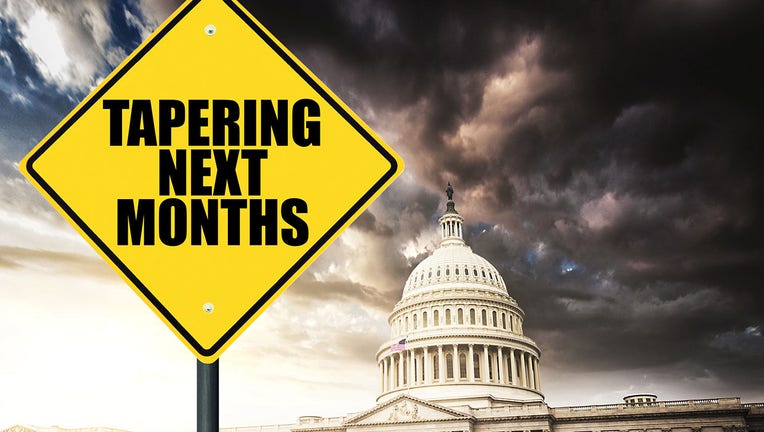Fed to begin tapering its assets, economists say it will send interest rates higher

The Federal Reserve will begin tapering its economic stimulus this month. Here's what that means for interest rates. (iStock)
After electing to hold the federal funds rate at its targeted 0% to 0.25% range at its November meeting, the Federal Open Markets Committee (FOMC) said the rate is expected to maintain until the labor market reaches maximum employment and inflation has rise to 2% over the long-term average.
However, the Federal Reserve also said that it would begin tapering its asset purchases this month, reducing the monthly pace of its net asset purchases by $10 billion for Treasury securities and $5 billion for agency mortgage-backed securities (MBS). Later this month, the committee will increase its holdings of Treasury securities by at least $70 billion per month and agency MBS by $35 billion per month.
The FOMC will increase its holdings of Treasury securities by at least $60 billion per month and agency MBS by at least $30 billion per month in December. The committee said it expects similar reductions will be needed each month, but is prepared to adjust based on changes to the economic outlook.
The reduction of these asset purchases is the first step to removing the Fed’s stimulus to the economy, which began at the onset of the COVID-19 pandemic. This change could start to push interest rates higher. If you want to take advantage of low rates now, refinancing your private student loans could potentially save you hundreds on your monthly payments. Visit Credible to find your personalized interest rate without affecting your credit score.
Fed to let inflation continue to rise
The Federal Reserve said it would be looking for inflation to moderately exceed 2% "for some time" before it looks to raise interest rates. Inflation rose at an annual rate of 5.4% in September, according to data from the U.S. Bureau of Labor Statistics. The rise marked the highest rate of increase in the past 13 years.
"The committee seeks to achieve maximum employment and inflation at the rate of 2% over the longer run," the FOMC said in its statement. "With inflation having run persistently below this longer-run goal, the committee will aim to achieve inflation moderately above 2% for some time so that inflation averages 2% over time and longer‑term inflation expectations remain well anchored at 2%."
As the Fed waits on inflation to pull the average above 2%, it's not raising interest rates. However, as the economy improves, interest rates could continue to rise over this year. Visit Credible to take out a personal loan while interest rates are low and compare multiple lenders at once to get the best rate for you.
MORTGAGE RATES REMAIN ABOVE 3%, BUT HOMEOWNERS CAN STILL SAVE BY REFINANCING
Mortgage interest rates to rise to 4%
Economists and members of the Federal Reserve project an interest rate hike may be necessary as early as next year. After the November meeting, economists said they were keeping mortgage rate forecasts the same, expecting them to continue steadily rising through 2021 and 2022.
"As the Fed’s actions were anticipated, this announcement will not impact our latest forecast for mortgage rates and mortgage originations," said Mike Fratantoni, Mortgage Bankers Association (MBA) senior vice president and chief economist. "We expect that rates on 30-year mortgages will increase from 3.2% today to about 4% by the end of 2022."
If you want to take advantage of low-interest rates before they rise, contact Credible to speak to a home loan expert and get all of your questions answered.
Have a finance-related question, but don't know who to ask? Email The Credible Money Expert at moneyexpert@credible.com and your question might be answered by Credible in our Money Expert column.

